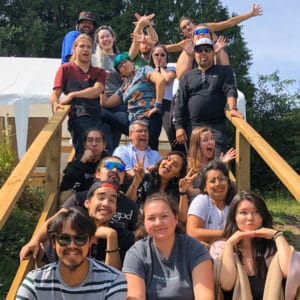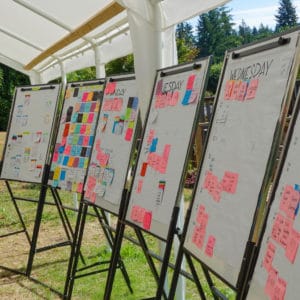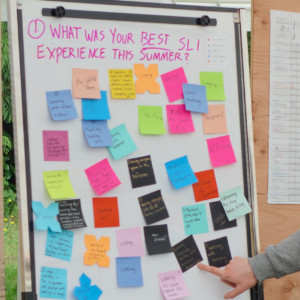Cama’i, everyone! My name’s Will, and I’m the newest addition to the Where Are Your Keys intern crowd. I’m in Kodiak with Julia, working with the Alutiiq language community.
This is my first time spending an entire summer on a WAYK project, but I’ve actually been working with Evan for a few years, since shortly after David Edwards introduced the game to me in my sophomore year at Stanford.
The circumstances of my discovery of the game are very fitting, I think: I was at a dinner for a Stanford program called Splash, which recruits volunteer teachers (mostly college students) to teach short classes on eclectic topics to middle schoolers and high schoolers. I was one of about a dozen teachers sitting at the table where David would give a demo of Where Are Your Keys in Mandarin Chinese that would get me immediately hooked on the game.
The reason I find this an especially appropriate introduction to WAYK is that WAYK puts a special emphasis on creating teachers. TQ: “Teach a Teacher” was one of the techniques that David threw in that demo, and it was a perfect move to convince a table full of teachers that WAYK was worth trying.
Where Are Your Keys creates a culture of teaching. Teachers in WAYK are both exalted and commonplace. Playing Where Are Your Keys instills in learners an appreciation for the art and challenges of teaching, but it does this by making sure that every person who plays the game gets the chance to try her own hand at teaching, no matter how inexperienced she may be. Teaching is an art that requires a lot of practice, and in WAYK each learner has the opportunity to practice teaching at every moment while playing the game.
On top of that, TQ: “Teach a Teacher” means that once a person understands how to teach language, she also has a responsibility to teach others how to teach language. In language, there are rules and strategies that people use to communicate effectively, but many people—in fact, most—can fluently employ dozens of these strategies without consciously realizing that they are using them. So it is for teaching. An effective teacher can feel intuitively which techniques might successfully embed a bit of language in a student’s mind, and which will glide over the student’s head without making an impact or (even worse) confuse the student further.
Knowing precisely what these techniques are, however, requires a lot of introspection and experimentation, and knowing how to show them to others requires double the amount of practice needed to simply use them. I’ve been teaching since I tutored classmates in algebra in high school, and over the past few years I have developed an intuition for languages and language teaching; now I need to organize my intuition, show it to others, and convince them to become teachers too. As I learn Alutiiq and how to teach it, I will be striving to make the list of Alutiiq teachers in Kodiak constantly grow. By the end of the summer, I want to be able to proclaim with confidence the “Teach a Teacher” credo: I am a Language Teacher Maker.
Post authored by Will.




